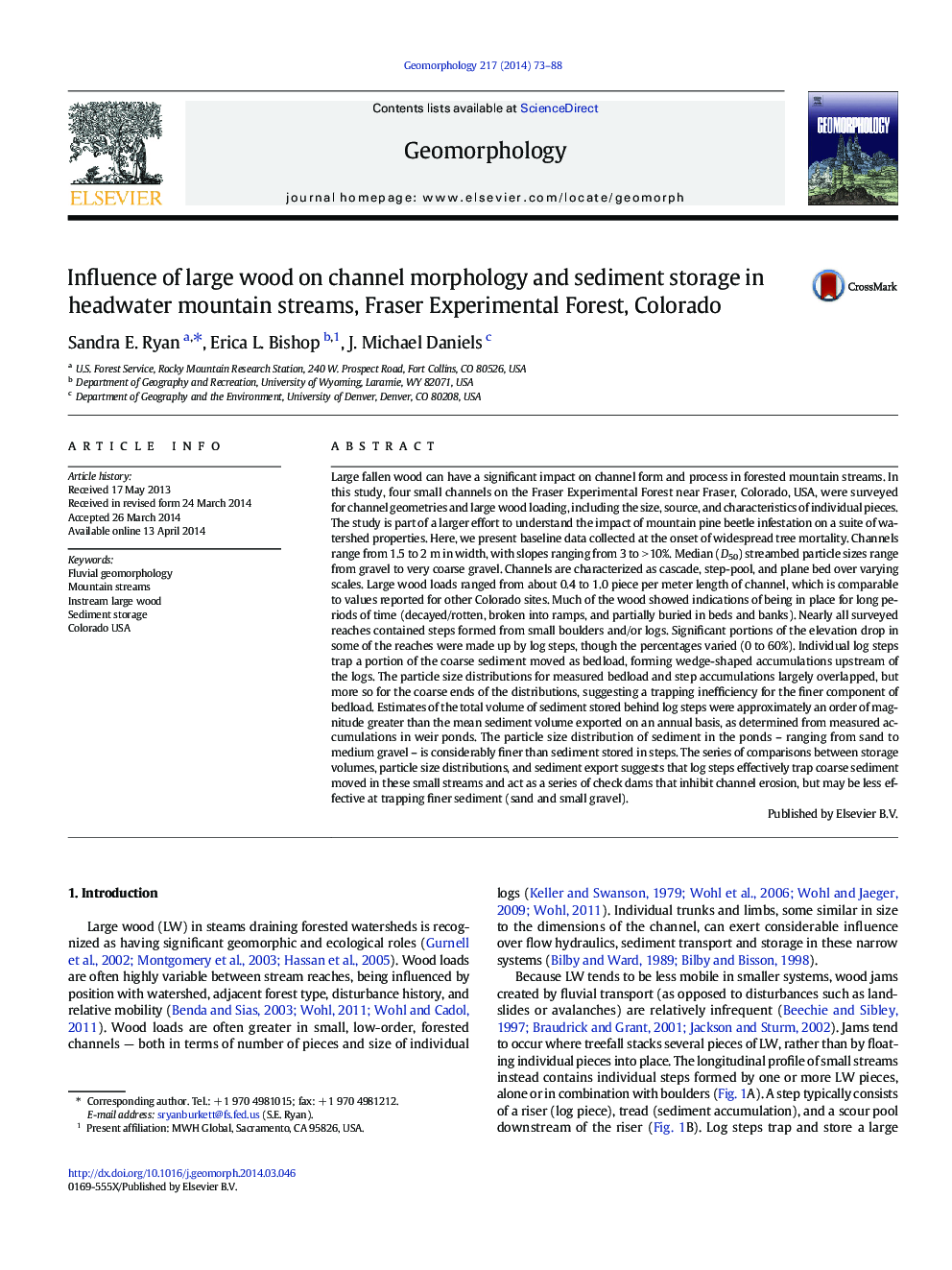| کد مقاله | کد نشریه | سال انتشار | مقاله انگلیسی | نسخه تمام متن |
|---|---|---|---|---|
| 4684558 | 1635432 | 2014 | 16 صفحه PDF | دانلود رایگان |

• Large wood in small, steep streams is likely held in-place for long periods of time.
• Log steps were common in these steep, first- and second-order channels.
• Sediment volumes stored behind log steps exceed mean annual load by about tenfold.
• Sediment upstream of steps is coarser than bedload and material in detention ponds.
• Steps may have lower trapping efficiency for sand and fine gravel.
Large fallen wood can have a significant impact on channel form and process in forested mountain streams. In this study, four small channels on the Fraser Experimental Forest near Fraser, Colorado, USA, were surveyed for channel geometries and large wood loading, including the size, source, and characteristics of individual pieces. The study is part of a larger effort to understand the impact of mountain pine beetle infestation on a suite of watershed properties. Here, we present baseline data collected at the onset of widespread tree mortality. Channels range from 1.5 to 2 m in width, with slopes ranging from 3 to > 10%. Median (D50) streambed particle sizes range from gravel to very coarse gravel. Channels are characterized as cascade, step-pool, and plane bed over varying scales. Large wood loads ranged from about 0.4 to 1.0 piece per meter length of channel, which is comparable to values reported for other Colorado sites. Much of the wood showed indications of being in place for long periods of time (decayed/rotten, broken into ramps, and partially buried in beds and banks). Nearly all surveyed reaches contained steps formed from small boulders and/or logs. Significant portions of the elevation drop in some of the reaches were made up by log steps, though the percentages varied (0 to 60%). Individual log steps trap a portion of the coarse sediment moved as bedload, forming wedge-shaped accumulations upstream of the logs. The particle size distributions for measured bedload and step accumulations largely overlapped, but more so for the coarse ends of the distributions, suggesting a trapping inefficiency for the finer component of bedload. Estimates of the total volume of sediment stored behind log steps were approximately an order of magnitude greater than the mean sediment volume exported on an annual basis, as determined from measured accumulations in weir ponds. The particle size distribution of sediment in the ponds – ranging from sand to medium gravel – is considerably finer than sediment stored in steps. The series of comparisons between storage volumes, particle size distributions, and sediment export suggests that log steps effectively trap coarse sediment moved in these small streams and act as a series of check dams that inhibit channel erosion, but may be less effective at trapping finer sediment (sand and small gravel).
Journal: Geomorphology - Volume 217, 15 July 2014, Pages 73–88